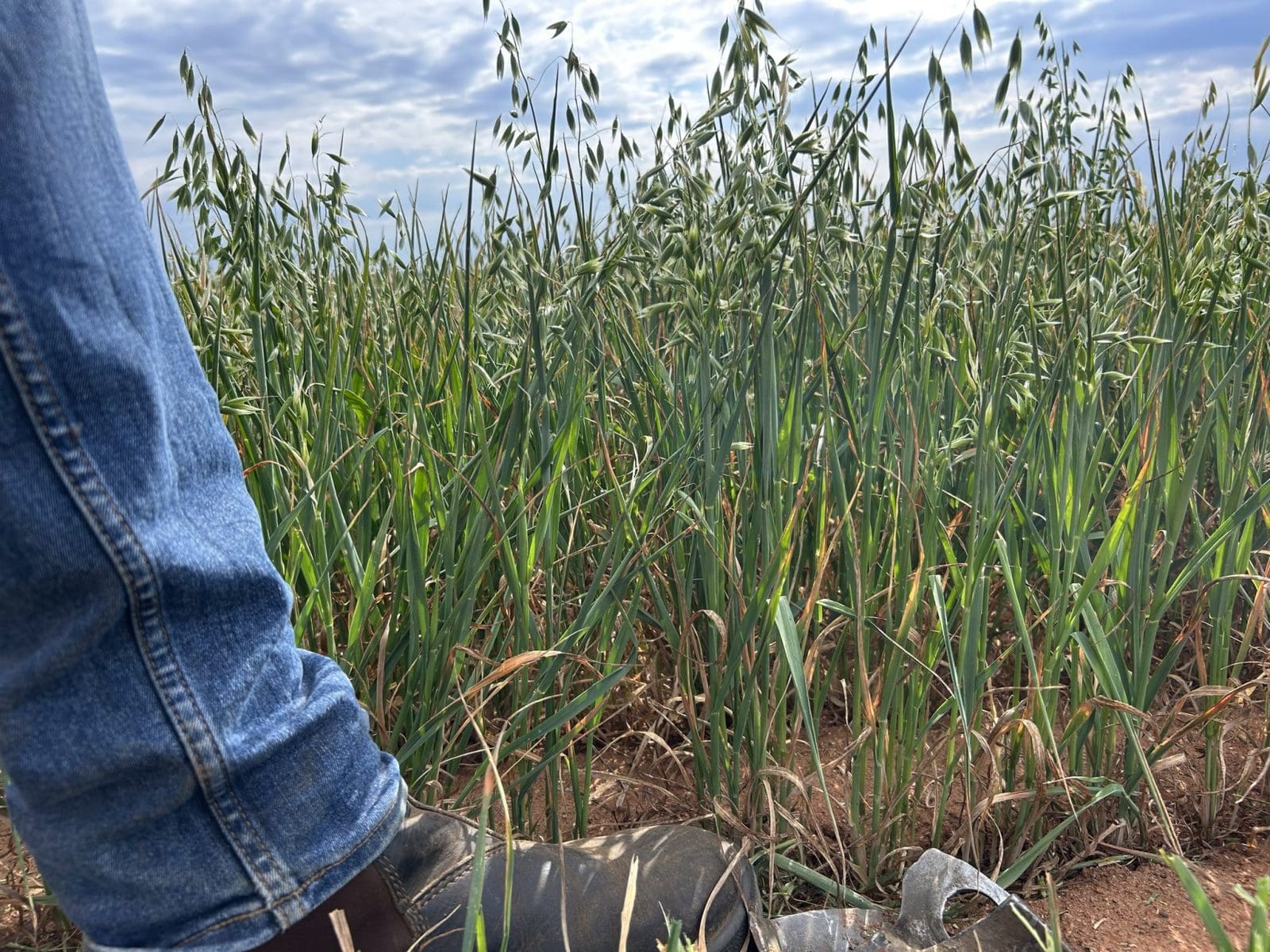
Yield potential has been limited by below-average rainfall for many growers away from the coast in WA this year. Photo: Tony White, Miling
RECENT rain has arrested the slide in grain yield potential for Western Australia, according to the Grain Industry Association of WA September crop report released today.
“Rain across large areas of the Western Australian grain belt a week ago, has halted the dramatic slide in grain yield potential that was occurring in the northern regions and improved the prospects for growers in the southern regions,” report author Michael Lamond said.
Total estimated grain production for the upcoming WA harvest is down 1.5 million tonnes (Mt) since GIWA’s August report, which put total winter-crop production at 16.96Mt.
“This decrease in potential would have continued without the one-off recent rainfall event last week.”
Mr Lamond said rainfall in the dry areas of the state continued with the trend all year of light falls.

While too late for many crops in the low-rainfall regions of the Geraldton and Kwinana north-east port zones, Mr Lamond said crops that were hanging on will benefit with a slight lift in potential and a significant lift in grain quality potential.
“For many growers, the rain has changed their prospects from a negative profit year to breakeven or slight profit.
“Crops in the low to medium rainfall zones in the central and southern grain growing regions will now hold potential grain yield to be close to ten-year averages rather than recent averages.”
Mr Lamond said crops in WA’s higher-rainfall zones along the west coast in the Kwinana and Albany zones, and the south coastal Albany and Esperance zones, are now back on track for grain production close to recent averages.
“High screenings in cereals in the drier areas of the state were shaping up as being a major issue prior to the rain.
“In response to lack of spring rain and low sub-soil moisture reserves, crops were dropping tillers and reducing the available grain production sites in the heads.
“With the recent rain, having fewer grains to fill will result in an increase in grain size across several million hectares of the grain-growing regions.
“This single rainfall event will increase yields slightly, as well as push many crops into the higher-priced grain brackets.”
Mr Lamond said the majority of WA’s grain crops have escaped significant frost damage.
“There are pockets of both stem frost and flower frost, although the impact on total grain production is expected to be minimal.
“Crops in the southern areas of the state will still be vulnerable over the next few weeks which could push production estimates lower.
“Other than that, even without further significant rainfall, current production estimates should hold.”
Source: GIWA
Further detail on crop conditions in individual WA port zones can be found as part of the full report on the GIWA website.

HAVE YOUR SAY